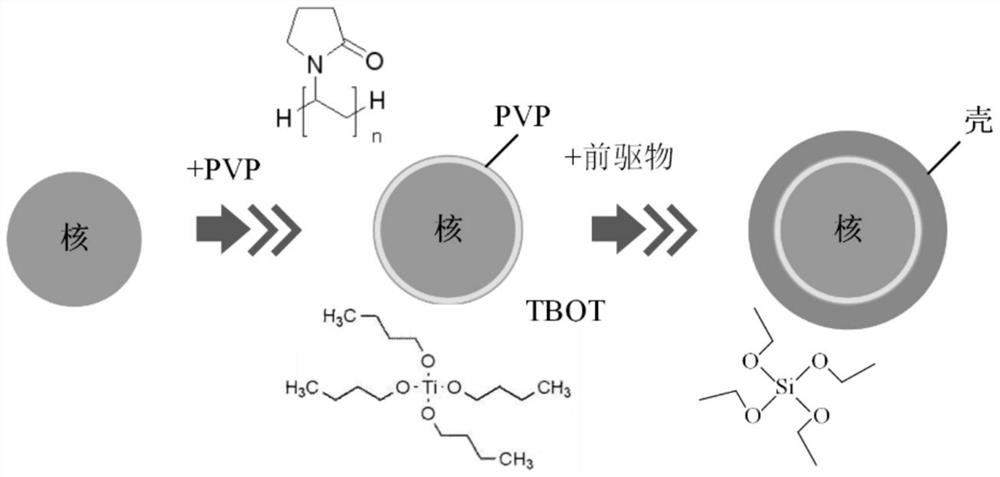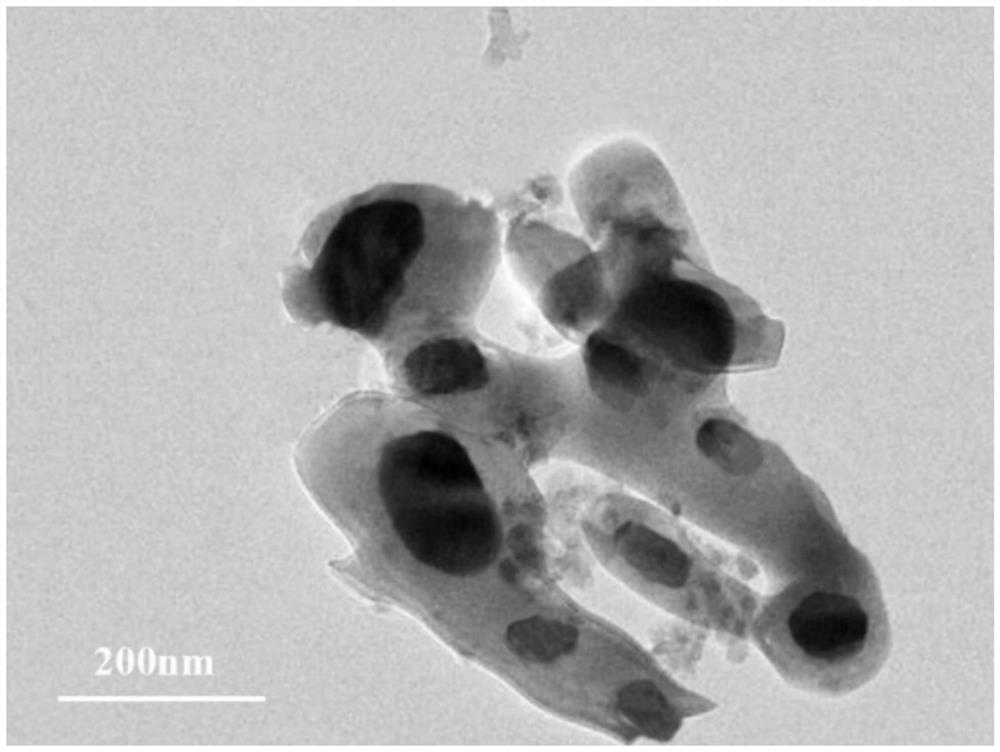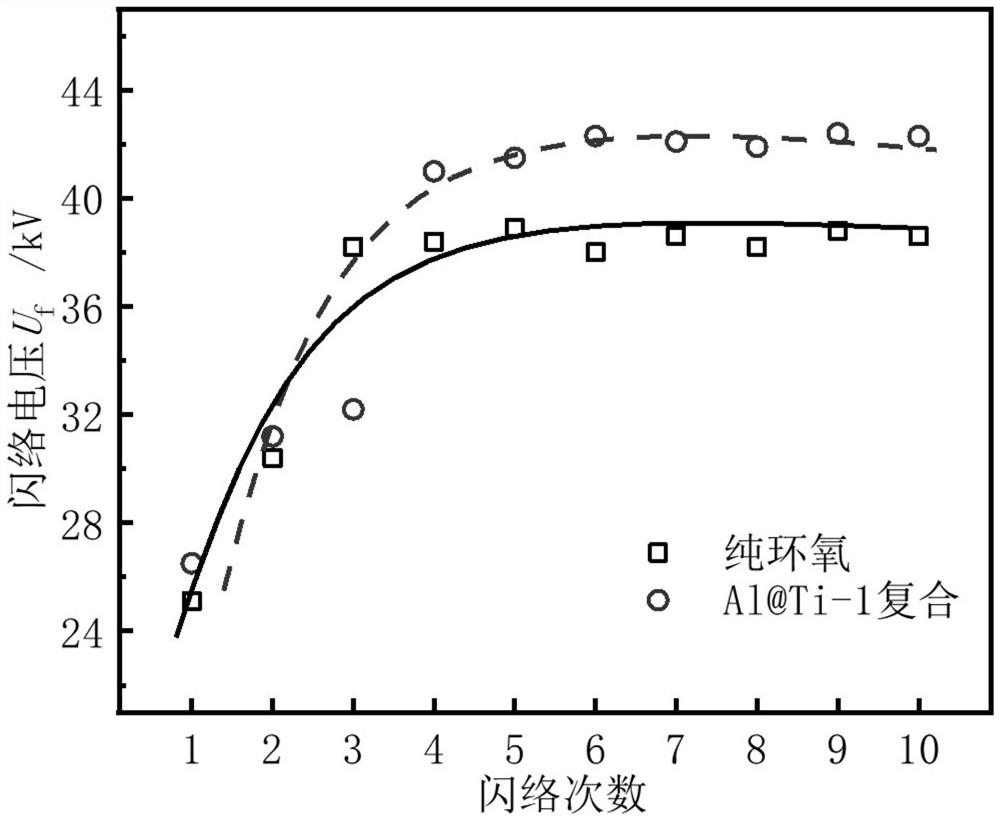A kind of nano filler and epoxy composite insulation material and its preparation method and epoxy composite insulation part
A nano-filler and composite insulation technology, applied in the field of nano-materials, can solve the problems of poor flashover performance along the vacuum surface, and achieve the effects of optimized dispersion temperature, clear shell structure, and clear edges
- Summary
- Abstract
- Description
- Claims
- Application Information
AI Technical Summary
Problems solved by technology
Method used
Image
Examples
Embodiment 1
[0068] The examples of this application provide Al 2 O 3 / TiO 2 Core-shell structure nanofillers, epoxy composite insulating materials and epoxy composite insulating parts, the specific preparation methods are as follows:
[0069] 1. Preparation of Al 2 O 3 / TiO 2 Core-Shell Structured Nanofillers: Nano-Al in α Phase 2 O 3 As the core, butyl titanate (TBOT, C 16 H 36 O 4 Ti) is the precursor, anhydrous ethanol is the solvent, and glacial acetic acid is the chelating agent to generate TiO 2 shell. Al 2 O 3 / TiO 2 The schematic diagram of the preparation structure of core-shell nanofillers is shown in figure 1 shown. The specific steps are:
[0070] 1) Weigh 1g of α-phase nano-Al with a diameter of 30nm 2 O 3 , through the three-roll mill three times. Add 25 mL of absolute ethanol. 2 g of polyvinylpyrrolidone (PVP) was added to the solution as a binding agent, and stirred uniformly with a glass rod; 1 ml of butyl titanate was added, and slowly stirred for 5 m...
Embodiment 2
[0087] The embodiment of the present application provides the test and dispersion test of the flashover voltage of the epoxy composite insulating part in vacuum DC along the surface, and the specific preparation method is as follows:
[0088] Doping Example 1 with 1wt% Al 2 O 3 / TiO 2 Epoxy composite insulating parts with core-shell structure nanofillers (core Al 2 O 3 , shell TiO 2 ) and bisphenol A type WSR618 E-51 liquid epoxy resin according to the samples prepared in Example 1 were respectively subjected to DC creeping flashover voltage test under vacuum, and each sample was flashed ten times to observe the creeping flashover voltage. changing laws. The result is as image 3 It can be seen that after the initial flash phenomenon, the average flashover voltage (41.9kV) along the surface of the composite sample (marked as Al@Ti-1 composite in the figure) is higher than that of the pure epoxy sample (marked as pure epoxy in the figure). epoxy) (38.6kV), that is, the s...
PUM
| Property | Measurement | Unit |
|---|---|---|
| diameter | aaaaa | aaaaa |
| thickness | aaaaa | aaaaa |
Abstract
Description
Claims
Application Information
 Login to View More
Login to View More - R&D
- Intellectual Property
- Life Sciences
- Materials
- Tech Scout
- Unparalleled Data Quality
- Higher Quality Content
- 60% Fewer Hallucinations
Browse by: Latest US Patents, China's latest patents, Technical Efficacy Thesaurus, Application Domain, Technology Topic, Popular Technical Reports.
© 2025 PatSnap. All rights reserved.Legal|Privacy policy|Modern Slavery Act Transparency Statement|Sitemap|About US| Contact US: help@patsnap.com



